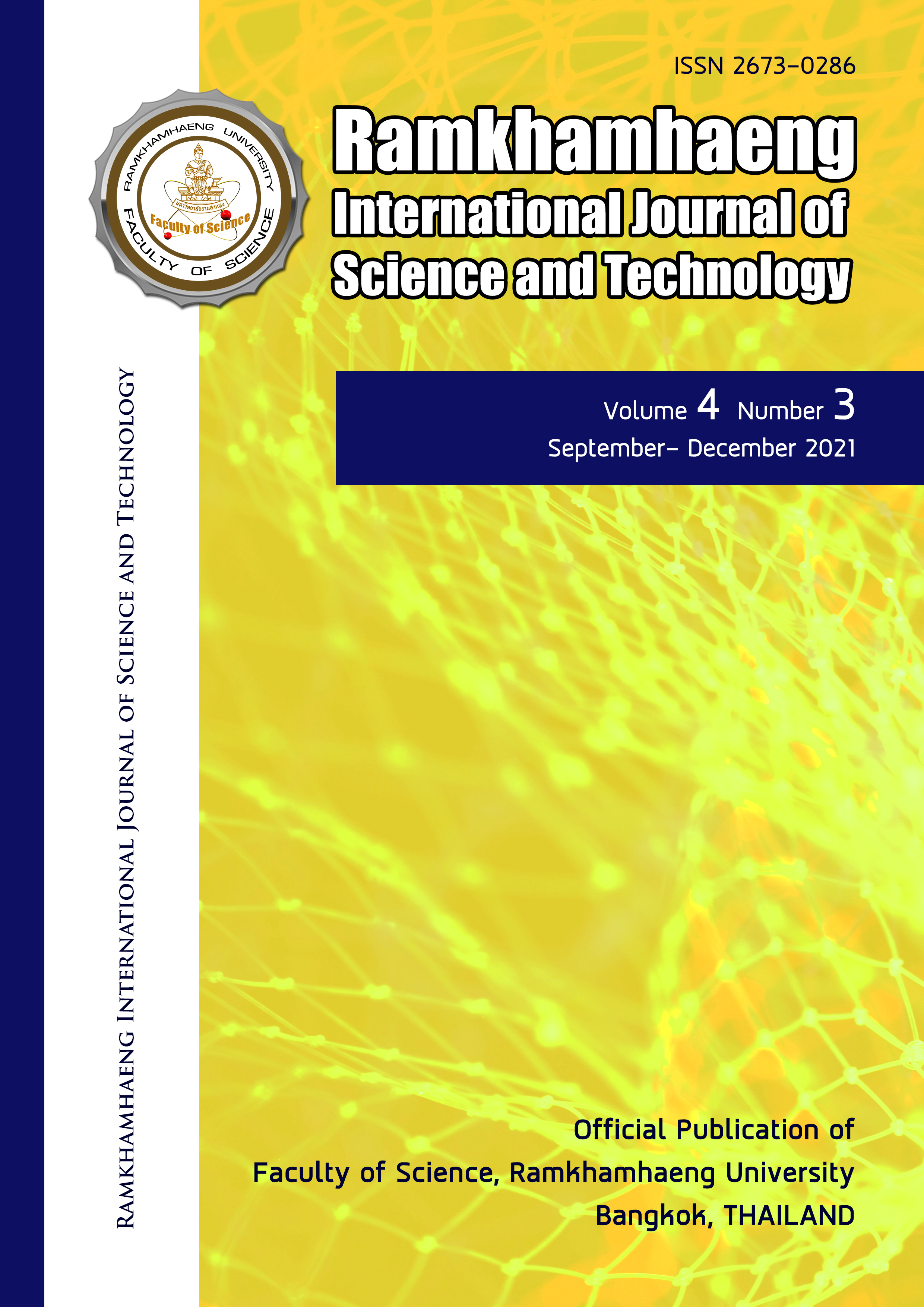Microplastic ingestion by zooplankton in Ko Sichang, Chonburi Province
Keywords:
microplastic, copepods, zooplankton, Gulf of Thailand, plastic debrisAbstract
Microplastics (<5 mm) have become serious pollution from anthropogenic activities in marine ecosystem. Zooplankton can ingest microplastic and be transferred to marine food webs through ingestion and accumulation of marine organisms. This reserch aims to investigated microplastics ingested by different groups of zooplankton at Ko Sichang. Microplastics were analyzed under a stereomicroscope and identified by using Fourier transform infrared spectroscopy (FTIR). Fibre microplastics were detected at all dominant zooplankton groups here: cyclopoid copepods, calanoid copepods, crustacean nauplii and gastropod larvae. Two types of microplastics were found including Polyethylene terephthalate (PET) and Polypropylene (PP). Moreover, cyclopoid copepods and calanoid copepods at Ko Sichang were found microplastic higher than those from the exclusive economic zone of the Andaman. Based on the findings, it may be utilized as an indicator for assessing the ecological risk of microplastics in marine organisms. This is threat to higher levels of food chain, including humans. It is crucial to conduct a risk assessment of microplastics on ecosystem, social and economic levels.
References
Browne MA, Galloway T, Thompson R (2007) Microplastic – an emerging contaminant of potential concern?. Integrated Environmental Assessment and Management. 3: 559–561
De Witte B, Devriese L, Bekaert K, Hoffman S, Vandermeersch G, Cooreman K, Robbens J (2014) Quality assessment of the blue mussel (Mytilus edulis): comparison between commercial and wild types. Marine Pollution Bulletin. 85(1): 146–155
GESAMP, 2015. In: Kershaw, P.J. (Ed.), Sources, Fate and Effects of Microplastics in the Marine Environment: a Global Assessment (Rep. Stud. GESAMP No. 90), p. 96(IMO/FAO/UNESCO_IOC/UNIDO/WMO/IAEA/UN/UNEP/UNDP Joint Group of Experts on the Scientific Aspects of Marine Environmental Protection)
Ivar do Sul JAI, Costa MF (2014) The present and future of microplastic pollution in the marine environment. Environmental Pollution. 185: 352–364
Jambeck JR, Geyer R, Wilcox C, Siegler TR, Perryman M, Andrady A, Narayan R, Law KL (2015) Plastic waste inputs from land into the ocean. Science 347: 768–771
Jang M, Shim WJ, Han GM, Song YK, Hong SH (2018) Formation of microplastics by polychaetes (Marphysa sanguinea) inhabiting expanded polystyrene marine debris. Marine Pollution Bulletin. 131: 365–369
Karlsson TM, Vethaak AD, Almroth BC, Ariese F, van Velzen M, Hassellöv M, Leslie HA (2017) Screening for microplastics in sediment, water, marine invertebrates and fish: method development and microplastic accumulation. Marine Pollution Bulletin. 122: 403–408
Li J, Yang D, Li L, Jabeen K, Shi H (2015) Microplastics in commercial bivalves from China. Environmental Pollution. 207: 190–195
Li J, Qu X, Su L, Zhang W, Yang D, Kolandhasamy P, Li D, Shi H, (2016). Microplastics in mussels along the coastal waters of China. Environmental Pollution. 214: 177–184
Li J, Lusher A, Rotchell JM, Company SD, Turra A, Brate ILN, Sun C, Hossain MS, Li Q, Kolandhasamy P, Shi H (2018). Using mussel as a global bioindicator of coastal microplastic pollution. Environmental Pollution. 244: 522–533
Lusher AL, O'Donnell C, Officer R, O'Connor I (2016) Microplastic interactions with North Atlantic mesopelagic fish. ICES Journal of Marine Science 73: 1214–-1225
Mathalon A, Hill P (2014) Microplastic fibers in the intertidal ecosystem surrounding Halifax Harbor, Nova Scotia. Marine Pollution Bulletin 81:69–79
Murray F, Cowie PR (2011) Plastic contamination in the decapod crustacean Nephropsnorvegicus (Linnaeus, 1758). Marine Pollution Bulletin. 62: 1207–1217
Naji A, Nuri M, Vethaak AD (2018) Microplastics contamination in molluscs from the northern part of the Persian Gulf. Environmental Pollution 235: 113–120
Phuong NN, Poirier L, Pham QT, Lagarde F, Zalouk-Vergnoux A (2018) Factors influencing the microplastic contamination of bivalves from the French Atlantic coast: Location, season and/or mode of life?. Marine Pollution Bulletin. 129: 664–674
Plastics Europe (2017) Plastics – The Facts 2017. Plastics Europe, Brussels.
Renzi M, Guerranti C, Blašković A (2018) Microplastic contents from maricultured and natural mussels. Marine Pollution Bulletin 131: 248–251
Rochman CM, Hoh E, Kurobe T, Teh SJ (2013) Ingested plastic transfers hazardouschemicals to fish and induces hepatic stress. Scientific Reports. 3: 3263
Santana MFM, Ascer LG, Custódio MR, Moreira FT, Turra A (2016) Microplastic contamination in natural mussel beds from a Brazilian urbanized coastal region: Rapid evaluation through bioassessment. Marine Pollution Bulletin. 106: 183–189
Sundaram S, Deshmukh VD, Raje SG (2010). Population eruption of sunset shell Siliqua radiata (Linnaeus, 1758) along Versova beach in Mumbai. Journal of the Marine Biological Association of India. 52(1): 99-101
Wright SL, Rowe D, Thompson RC, Galloway TS (2013) Microplastic ingestion decreases energy reserves in marine worms. Current Biology. 23: 1031–1033
Van Cauwenberghe L, Janssen CR (2014) Microplastics in bivalves cultured for human Consumption. Environmental Pollution. 193: 65–70
Zhou Q, Zhang J, Fu J, Shi J, Jiang G (2008) Biomonitoring: an appealing tool for assessment of metal pollution in the aquatic ecosystem. Analytica Chimica Acta. 135 –150
Zhao S, Zhu L, Li D (2016) Microscopic anthropogenic litter in terrestrial birds from Shangai, China: not only plastics but also natural fibers. Science of the Total Environment. 550: 1110–1115
Downloads
Published
Issue
Section
License
Copyright Notice: a copyright on any article in the published journal is retained by the Ramkhamhaeng International Journal of Science and Technology. Readers or Users grant the right to use of the Article contained in the Content in accordance with the Creative Commons CC BY-NC-ND license and the Data contained in the Content in accordance with the Creative Commons CC BY-NC-ND.


